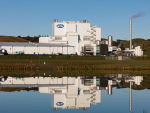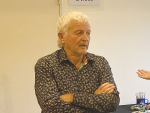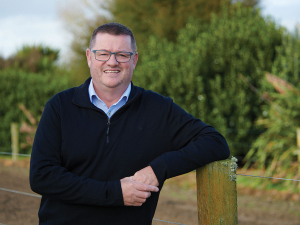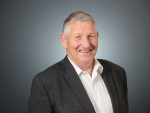He looked at several different breeds including Limousins, South Devons and Angus. “Then I came across these Belgian Blues and I was just fascinated by the genetics. Especially those genetics involving the myostatin gene and the suppression of that gene and also the efficiency with which they produce lean beef. I started the Belgian Blues in 1988, and 24 years later the genetics of them still fascinate me,” he adds.
But while he was fascinated with the Belgian Blues, Smith recognized that the actual breed – as it stood – needed to be changed if it was to be successful in New Zealand. For example, in Europe the animals are stall fed and many of the calves are born though caesarean section.
“So what I tried to do was to ‘harvest’ these interesting genes into New Zealand cattle. I started with the herd we had on the farm at the time, which was a hangover from the Angus stud. Although we dispersed the stud when I left home, they kept a few old cows and an old bull and interbred them with Friesians.
“There’d even been a bit of Limousin blood introduced into them; so that was the base herd I started with. Then I started incorporating Belgian Blue genetics into that and even used part-bred sires to try and maintain the polled condition. The Belgian Blues are horned animals, but now over 80% of my calves born are polled,” he says.
Smith’s focus was on selecting for calving ease, growth rate, structure and the mobility to get around the hills on his farm. While he shows animals, Smith says the selection pressure has always been on performance.
“I’ve developed an interesting line of cattle that are structurally pretty darn good and they still grow extraordinarily rapidly. The most spectacular performance I had a couple of years ago was a bull calf at the Royal Easter show in Auckland. He would have been barely 11 months old and weighed 584 kilos which was massive production.”
Unbelievably, says, Smith, under the scrapped ETS he’d have been penalised because it would be treated the same as 345 kilo carcase from a three year old.
“That’s what so crazy about the originally proposed ETS and the estimation of the methane emissions from ruminant animals. I’d be one of the few in this place (parliament) that understands it. It’s crazy because you penalise the most efficient,” he says.
Some of Smith’s animals are killed at Ruakura and are sold through a supermarket in Wellington.
“They put it through its gourmet bar. Now your traditional men would all say it’s far too lean. Traditional works would downgrade it because it’s too lean and yet customers actually like it,” he says.

















